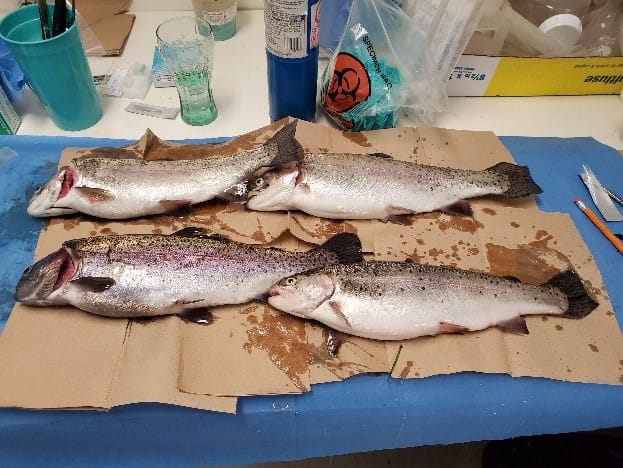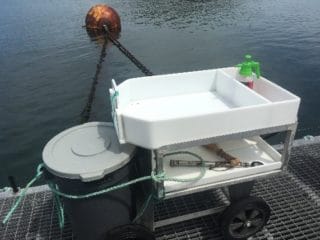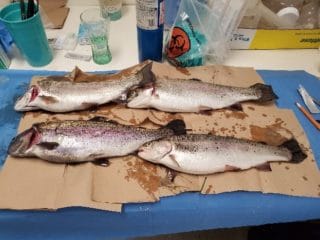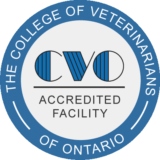Mortality Collection and Classification

 As the old farming adage goes, “where there’s livestock, there’s deadstock.” As any fish farmer knows this holds true in the case of aquaculture. Particularly when dealing with populations of thousands or even millions of fish, there will be some degree of mortality in the population. Low levels of mortalities (commonly called “morts”) are considered normal and generally do not raise much concern. Recording and tracking trends in mortality, including the underlying cause, can provide producers with very valuable information; this can be used to get ahead of potential issues or for future production planning.
As the old farming adage goes, “where there’s livestock, there’s deadstock.” As any fish farmer knows this holds true in the case of aquaculture. Particularly when dealing with populations of thousands or even millions of fish, there will be some degree of mortality in the population. Low levels of mortalities (commonly called “morts”) are considered normal and generally do not raise much concern. Recording and tracking trends in mortality, including the underlying cause, can provide producers with very valuable information; this can be used to get ahead of potential issues or for future production planning.
Every fish farmer, regardless of the size of their operation, should be collecting morts daily, or at least as regularly as possible, and make every attempt to classify the cause of mortality. Some examples of mort classifications include:
- “Fresh” or “Silver” which is a fresh mort with no obvious cause of death
- “Predator” which is self-explanatory, and ideally would specify the type of predator where possible (eg. heron, mink, racoon, etc)
- “Non-codable” or “Old” for a mort which is decomposing, and it is not be possible to adequately assess the cause of death
- Environmental factors such as “Low Oxygen”, “Plankton” or “Diatoms”, “Pollen”, etc.
- Any specific disease which has already been diagnosed at your farm (eg. “Bacterial Coldwater Disease”)
The list of classifications should be catered to your operation and be as extensive as works well for you. Keep in mind, the more classifications you have the more detailed your information will be, but too many classifications may over complicate the task of classifying morts and ultimately be detrimental.
When it comes to considering whether to classify morts, it is important to acknowledge that once a fish dies, it becomes a sunk cost of the operation. However, by cutting that mort open and performing a quick necropsy, you can derive some value from that mort. In many cases a developing disease can be caught in its early stages, allowing the farmer to take immediate action to limit future impacts of the disease or fish health issue. If nothing more, it allows you to track and benchmark mortalities to improve and optimize production. We cannot prevent all mortality on the farm, but we can learn from these mortalities, and one of the best ways to do so is to collect and classify your morts.
 If you are interested in starting or improving the mort collection and classification at your site, we are here to help. We are happy to assist with developing and implementing mort classification protocols or reviewing and optimizing the protocols you already have in place. We also offer hands-on necropsy and mort classification training so that you can feel confident classifying and tracking your mortalities. As always, we are here to help drive continual improvement in your production and fish health management.
If you are interested in starting or improving the mort collection and classification at your site, we are here to help. We are happy to assist with developing and implementing mort classification protocols or reviewing and optimizing the protocols you already have in place. We also offer hands-on necropsy and mort classification training so that you can feel confident classifying and tracking your mortalities. As always, we are here to help drive continual improvement in your production and fish health management.
If you have any questions on these or other topics, please do not hesitate to contact our Veterinarian Dr. Mykolas Kamaitis.




